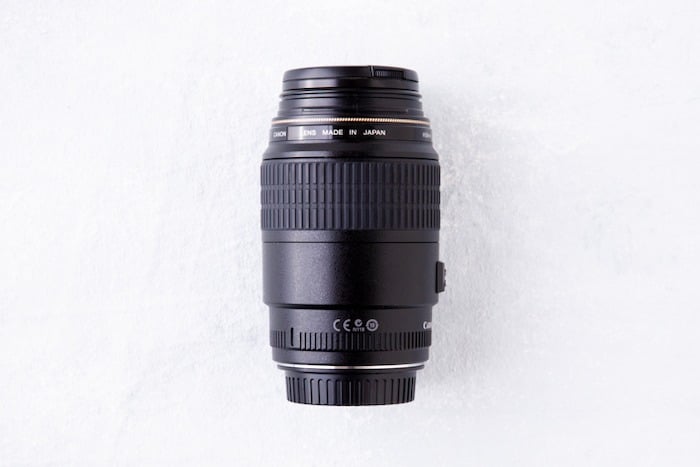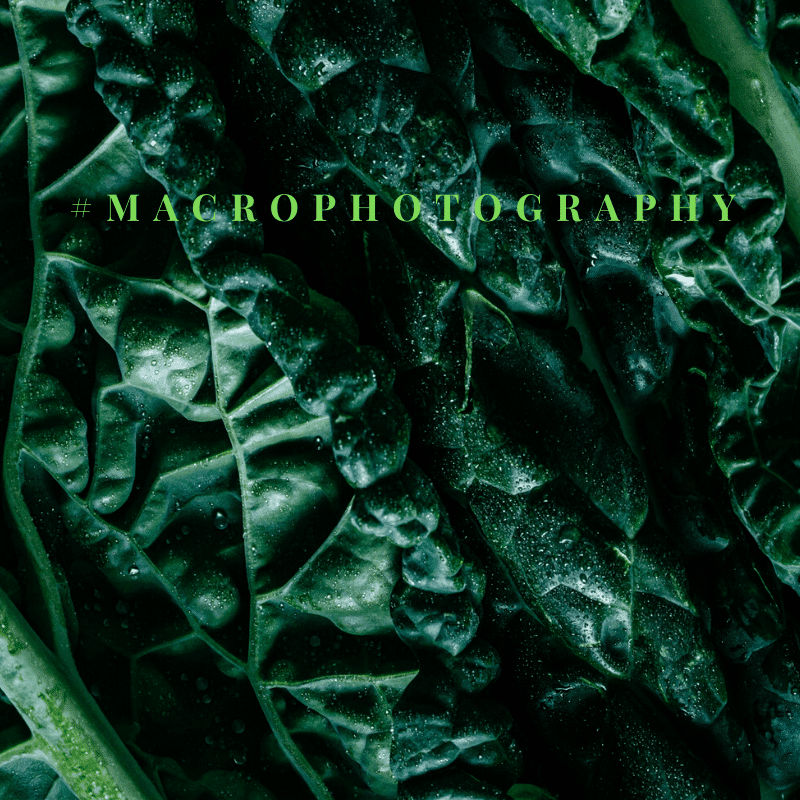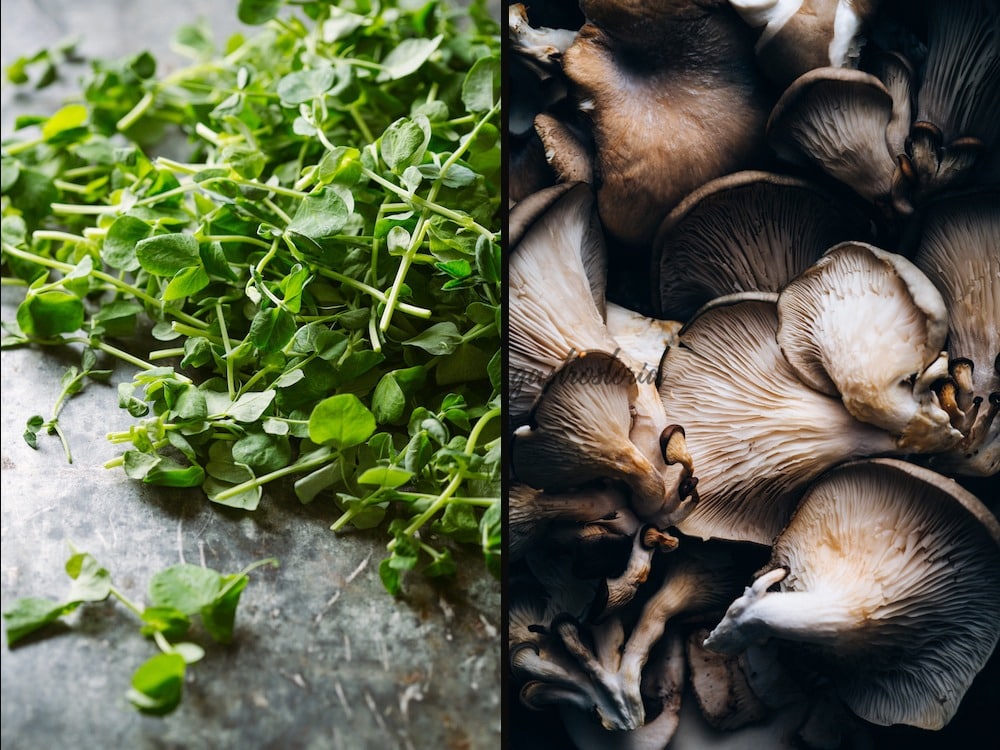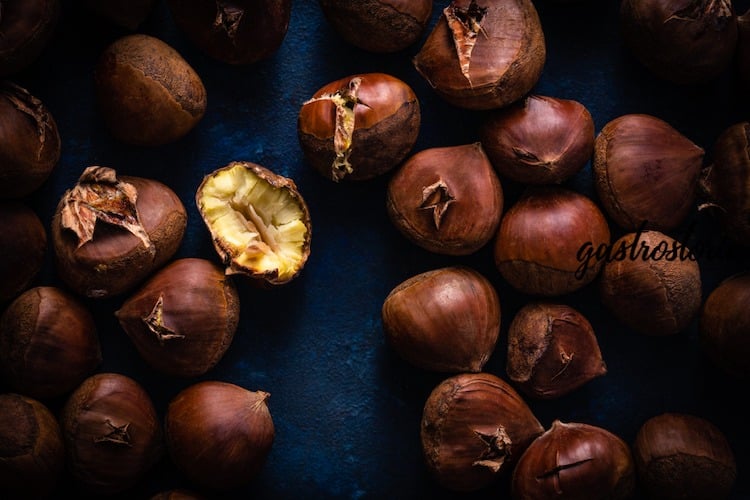Macro photography is stunning but it comes with a unique set of challenges. To make beautiful food images with your macro lens, you need to get your subjects in razor-sharp focus. This means optimizing the way you handle focus for your food subjects.

Why a Macro Lens is Your Friend
As a food and still life photographer, my macro lens is my best friend. In fact, if I could only have one lens in my kit, it would be my Canon 100mm macro lens.
A macro lens gives you the ability to shoot with short focusing distances. It allows you to take sharp photos of very small subjects or capture fine detail. In food photography, you can highlight the textural and colour detail that often go unnoticed or underappreciated.
A true macro lens has a magnification ratio of 1:1 or greater, and a focusing distance of around 30cm. This means that the ratio of the subject on the size of the sensor plane is as large–or larger–than your subject.

However, you don’t just have to take close up shots with a macro lens. You can also move back from your subject and take beautiful food portraits, without the distortion some other lenses might give, especially when shooting at a 45-degree angle. In this case, you’re actually are not using the macro capabilities of the lens.
In effect, a macro lens is like having two lenses in one.

Focal Length
The focal length of your lens and your camera type will affect your results.
If you’re shooting with a camera that has a cropped sensor, your macro lens will behave differently than it will on a camera with a full-frame sensor. For example, you get a focal length of about 80mm when shooting with a 60mm macro lens on a Canon Rebel, which had a crop factor of 1.6.
When you shoot on a full frame, the focal length is as stated. A 100mm macro works like a 100mm macro. You don’t get that much tighter crop as you do when shooting with a cropped sensor.
Minimum Focus Distance
The minimum focus distance of a lens determines how close you can get to your subject and still focus to achieve sharp images.
The longer your focal length, the farther away you need to be in order to focus on your subject. for example, my Canon 100mm f/2 macro lens has a minimum focusing distance of 1.02′ (31 cm).
This means that I need to be at least 1.02′ (31 cm) away from my subject to get proper focus.

macro lens
The Plane of Focus
It’s important to understand the concept of plane of focus and how it affects depth-of-field.
The plane of focus is a two-dimensional imaginary plane that lies parallel to your camera’s sensor. It represents the theoretical plane of sharpest focus and lies in the depth-of-field.
When you change the angle or position of your camera, the plane of focus remains relative to your sensor. The subjects in the plane will be in focus. The subjects or areas outside of it are your depth-of-field. The degree to which your subject is out of focus depends on your aperture and relative distance.
It helps if the majority of your subject is on the same plane of focus. If not, one solution is that you can shoot three images with different focus points. You can then use focus stacking in Photoshop to get a single image that is sharp enough throughout.
Depth-of-Field
The depth-of-field (DOF) is the distance between the nearest and farthest objects that are in sharp focus.
The depth of field is determined by the focal length of your lens, the distance to your subject, as well as your aperture.
The shorter your distance from the subject, the “thinner” the depth of field will be.
If you want to shoot an image where everything is in focus, shoot with a much narrower aperture (high f-stop).
If you shoot at f/9 with a macro lens you’ll have a shallower depth-of-field than you would get at f/9 on a regular lens.
I often shoot food at around f/5.6 when using my other lenses, such as my 50mm or my 24-70mm.
I get a very shallow depth-of-field at f/5.6 on a macro lens. I need to go up to f/9 or even higher to get enough of my subject in focus.
The biggest mistake food photographers make when shooting with macro lenses is that they use too small of a small depth of field. This causes only a very specific part of the subject to be focused. The rest of the subject and image appear blurry.
This is a depth-of-field issue rather than being a problem with the autofocus.

Manual Focus
When working at high magnifications, you can’t rely on the autofocus of your lens. You need pinpoint accuracy to focus for macro shots.
Macro lenses don’t have great autofocusing capabilities, especially at high magnifications. The lens will continually pan back and forth, trying to lock focus. This problem worsens in low light situations.
Macro photography magnifies the details in your subjects. When you magnify your subject, you also magnify any mistakes. The smallest error in focusing can cause you to miss focus entirely.
Use manual focus in macro photography. If you do need to use auto focus but are having difficulty focusing, move the camera backwards or forwards. Take the photo as soon as the plane you want to be sharp comes into focus.

Conclusion
Lastly, for super sharp macro photos, you need to use a tripod.
In macro photography, the subject is usually close to the lens. When a lens focuses very close to a subject, some of the light entering the lens can be lost to the side of the camera’s sensor.
Your camera may use a slightly longer shutter speed to compensate for this loss of light. Longer shutter speeds are harder to handhold and can lead to camera shake.
A tripod will help keep your camera stable so you can shoot at slower shutter speeds without the dreaded camera shake, and achieve sharp focus.
It will also bring more light into your camera and give you the ability to stop down with your aperture.
Hopefully this post has given you some takeaways to immediately improve your macro food photography.



